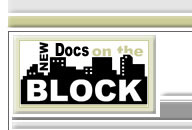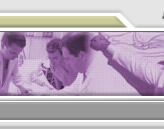



|
Educating Patients - A True Art
Part 2  by Jarrod Shapiro, DPM Joined practice of John K Throckmorton,DPM,PC Lansing, Michigan July 2006 Now that we�re all in agreement that educating our patients well is an important skill that we all need to master, let�s talk about some ideas to successfully counsel our patients. As I mentioned before, I still have a lot to learn about patient education. It�s an ongoing process that really never ends. They don�t call it the practice of medicine for nothing! With this in mind, I�ve started making changes to how I�m educating my patients.First, I�ve started using pictures and foot models to indicate the anatomical areas involved (especially when I�m consenting them for surgery). Use your Netter anatomy text to point out relevant anatomy and pathology. Remember, most people, even other physicians, don�t understand the complexity of the foot and ankle, and your quick verbal description may not get the picture across (no pun intended). Reviewing radiographs is another good method. Incidentally, it�s my opinion that if you�ve taken an x-ray you should show it to the patient. Don�t look at it outside the room, file it, and then talk to the patient. They have a right to see their x-ray (as well as the results of any test you order on them). In my very little spare time, I�ve started writing instructional reading materials to supplement my explanations. I very simply used my digital camera to take pictures and apply these to a word document. I have handouts on how to pick out the correct shoes, calf stretches, ankle sprain exercises, and diabetic foot care. The APMA, ACFAS, and AAPSM websites also have good patient education materials. Once you�re in practice you may opt for a practice website, which may include information about foot and ankle pathology. Refer your patients to your site when they have a specific problem. Keep in mind, though, that many older patients may not be as savvy using the internet as you are! Remember, these are all supplements to your interaction with your patients: your bedside manner. Take the time to discuss the issue. Use lay wording � keep the medspeak out of your discussions. Ask if they have any questions and try to answer them clearly and patiently. Remember, many patients are intimidated by physicians and may not ask questions. One method of insuring their understanding is having them repeat back what you just told them. This is especially true with diabetic education. After you�ve discussed all they should and shouldn�t do, ask them to repeat it back to you and see just how well they listened and comprehended your instructions. Be patient with yourself and your patients. Just like doing a bunionectomy, educating patients is a skill that takes time to learn and master. Write in with your education ideas. What works well for you? Best wishes educators!! Talk to me,
|














